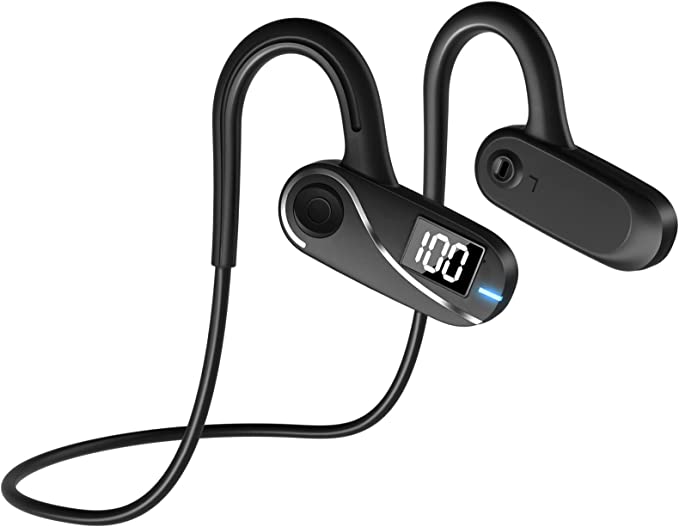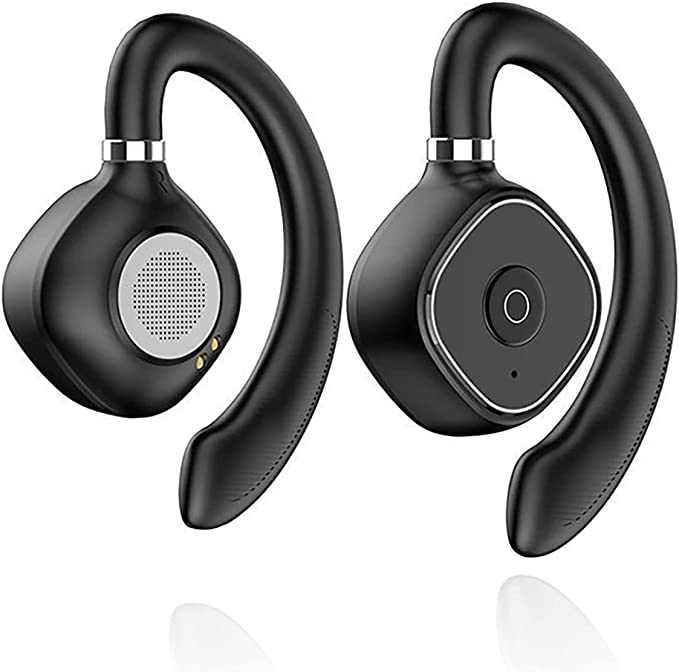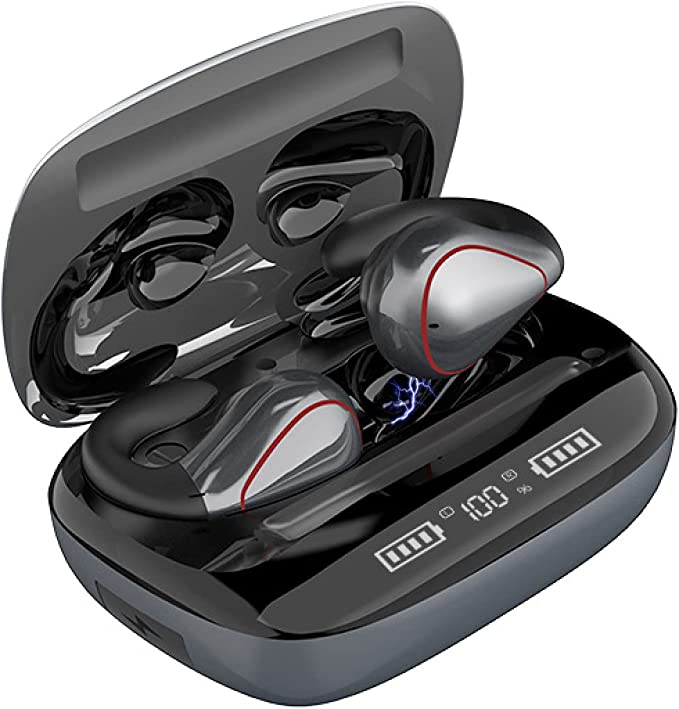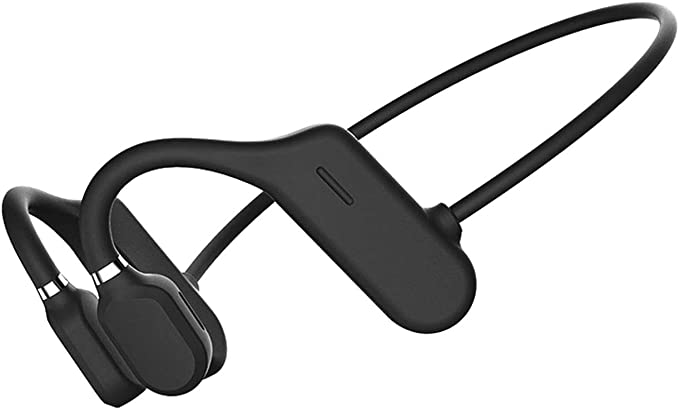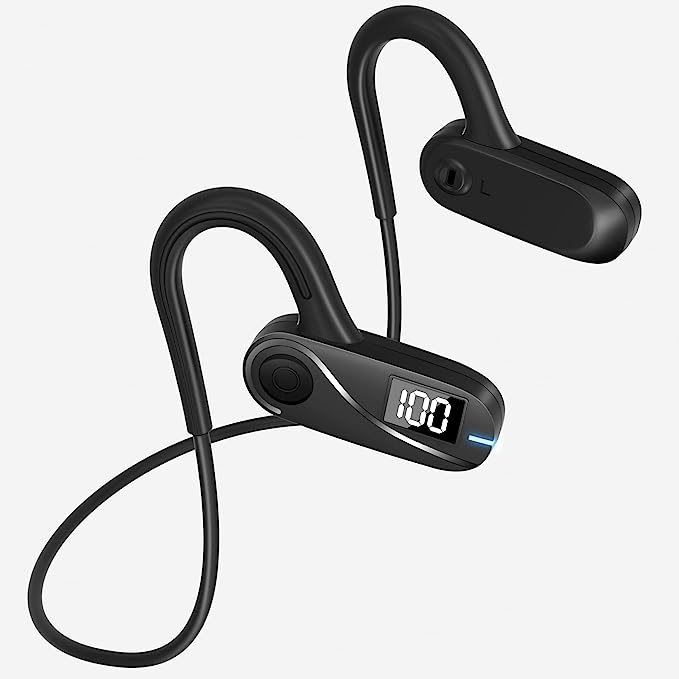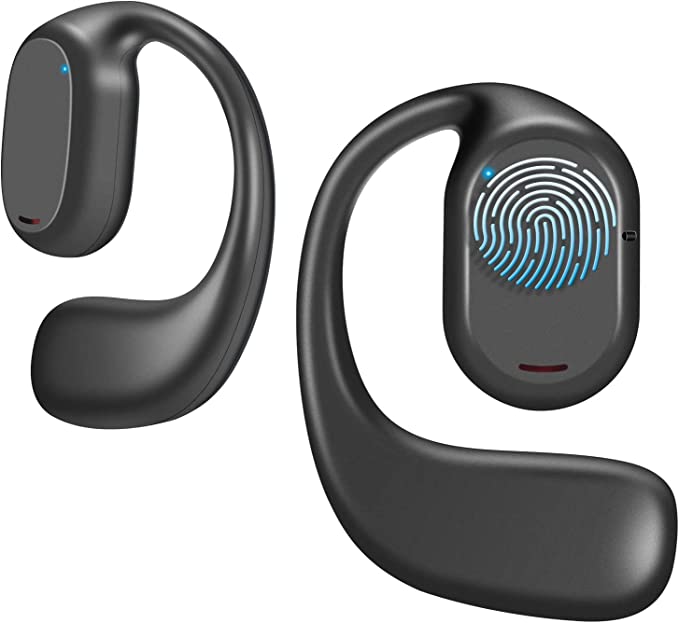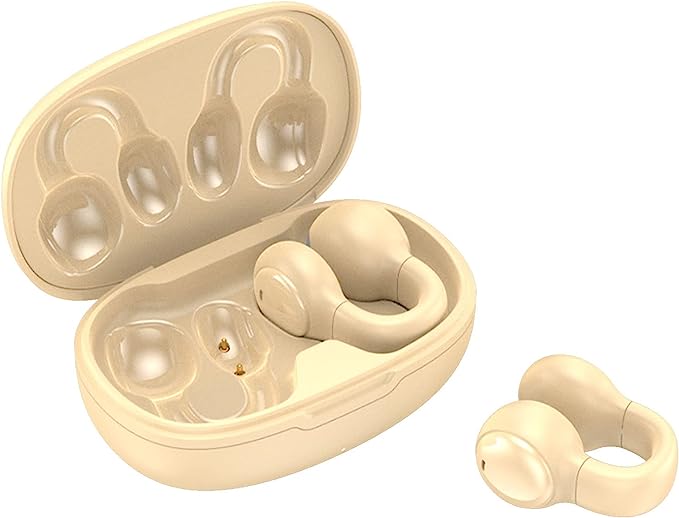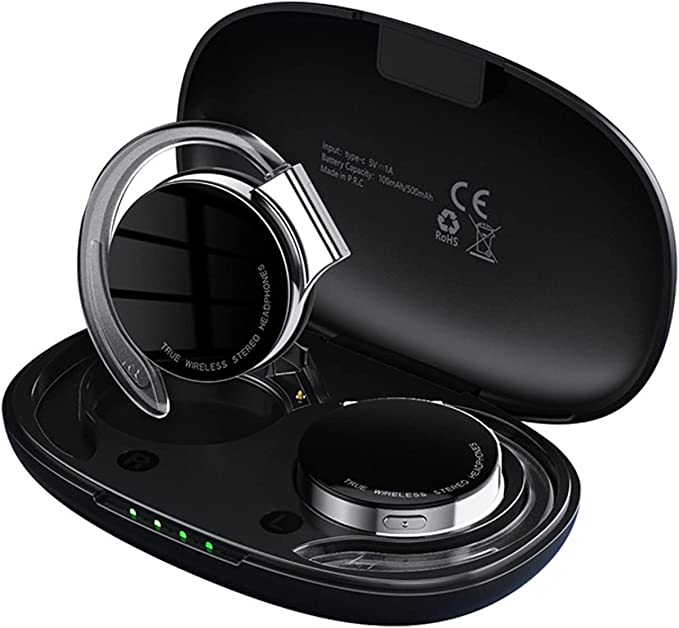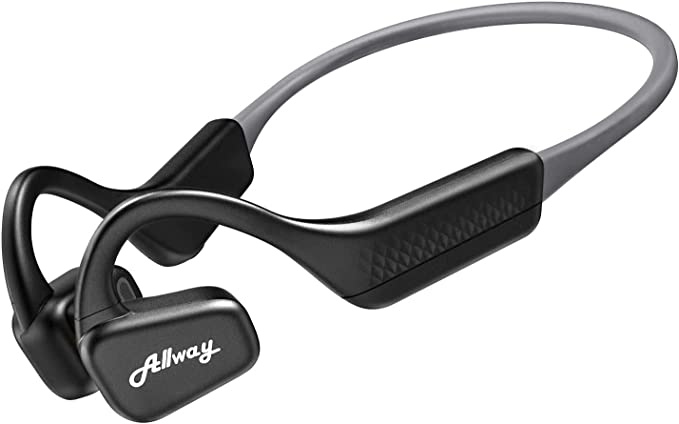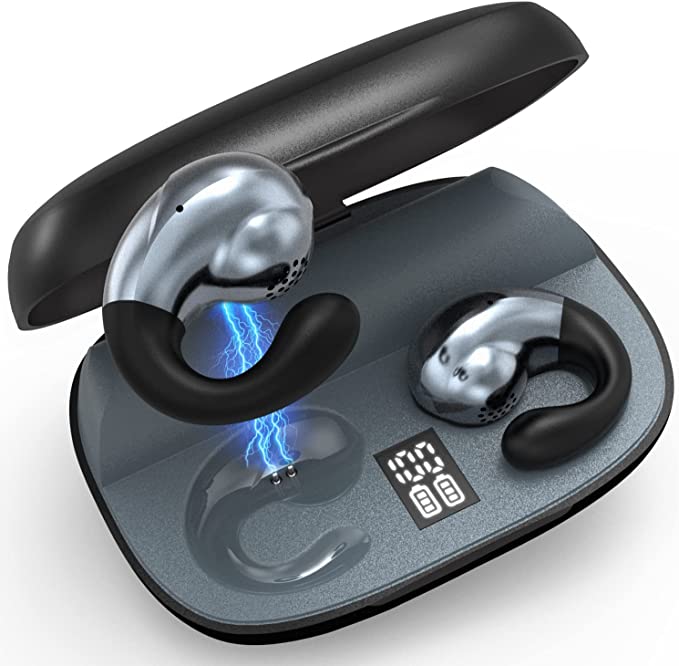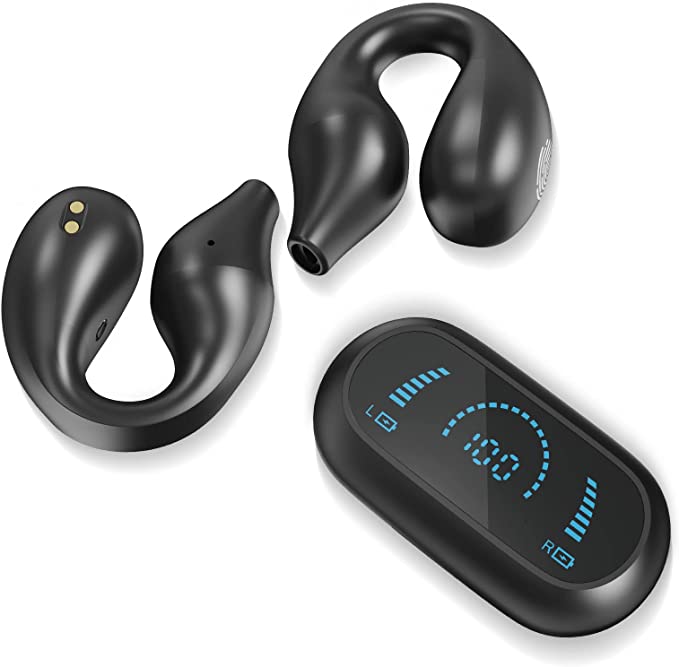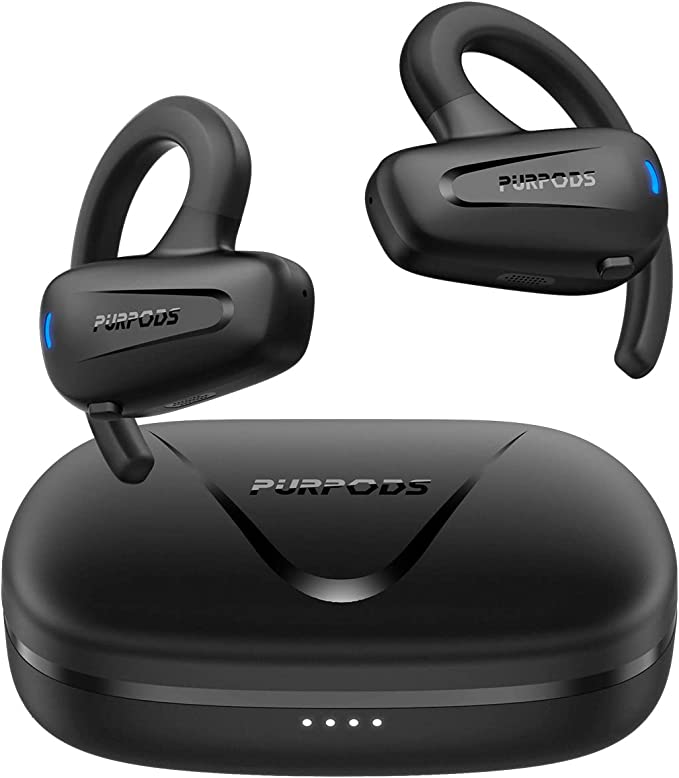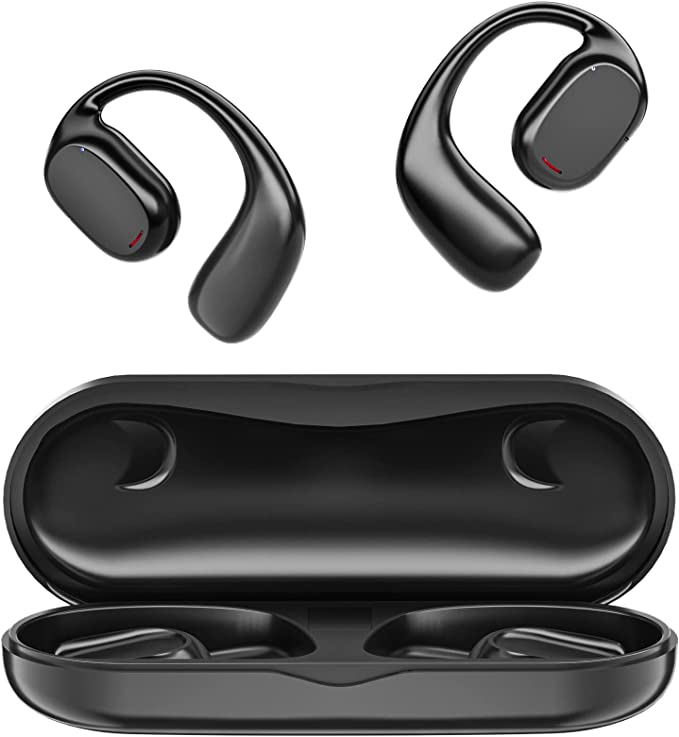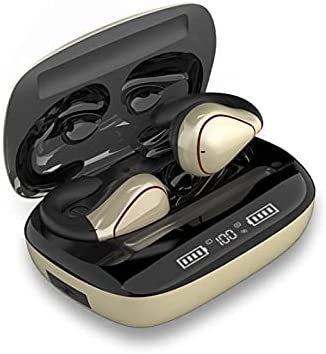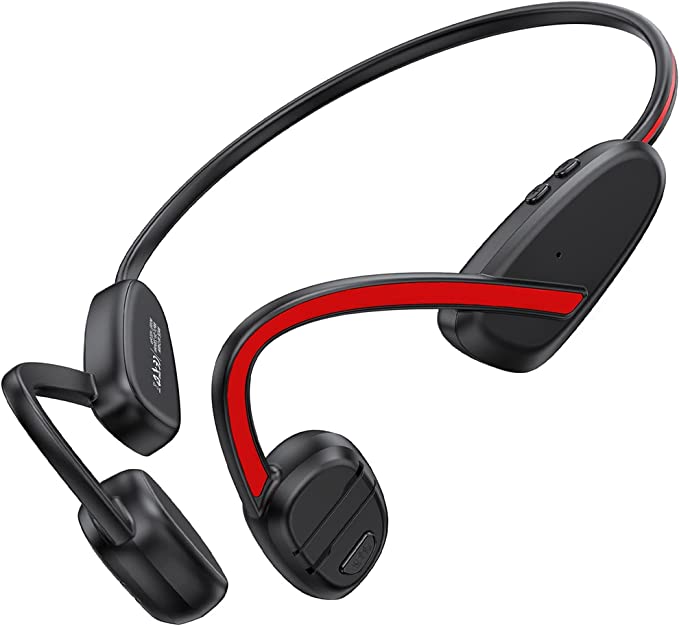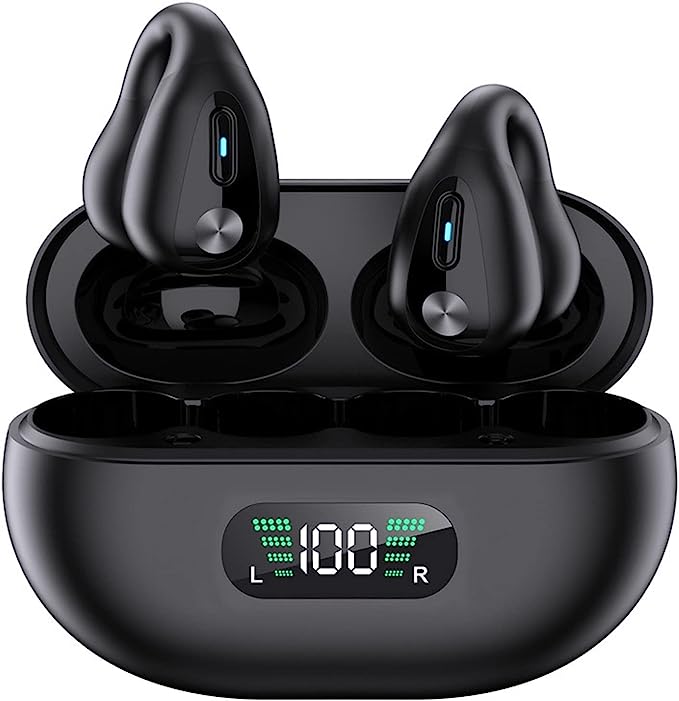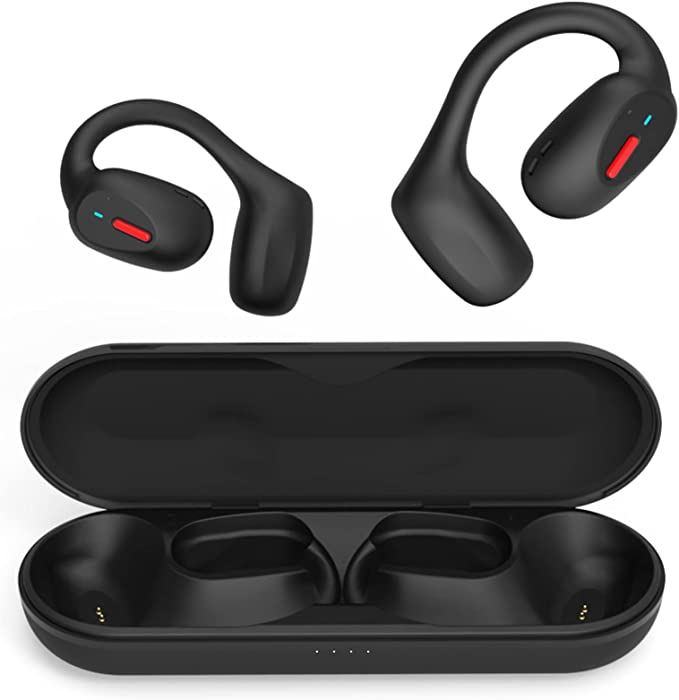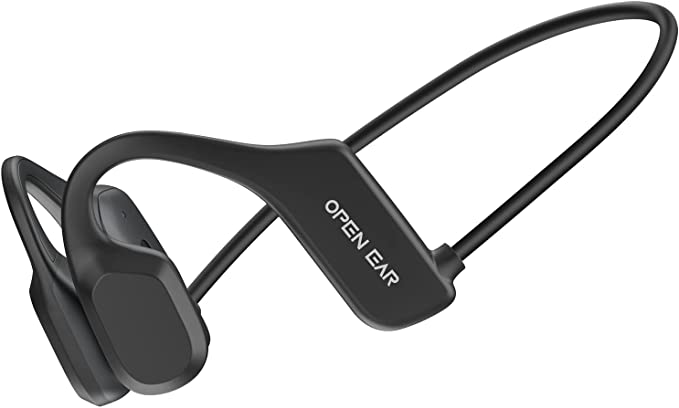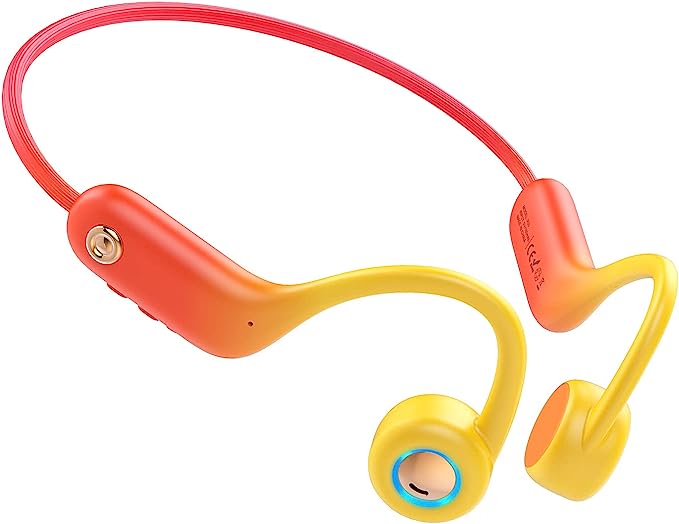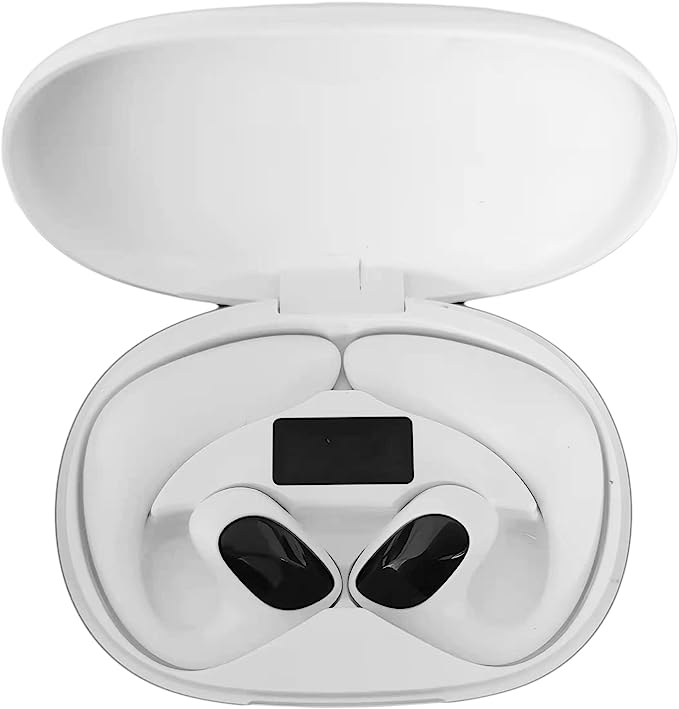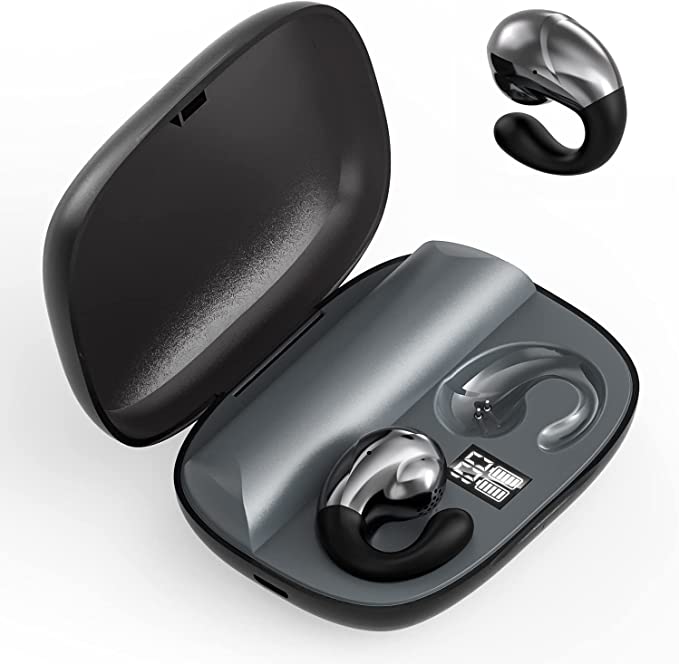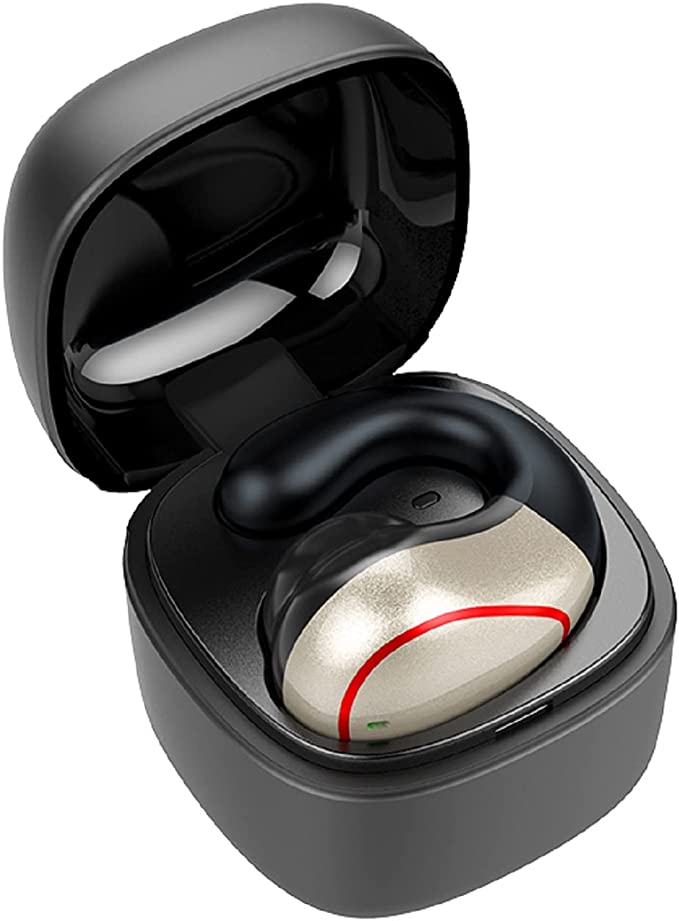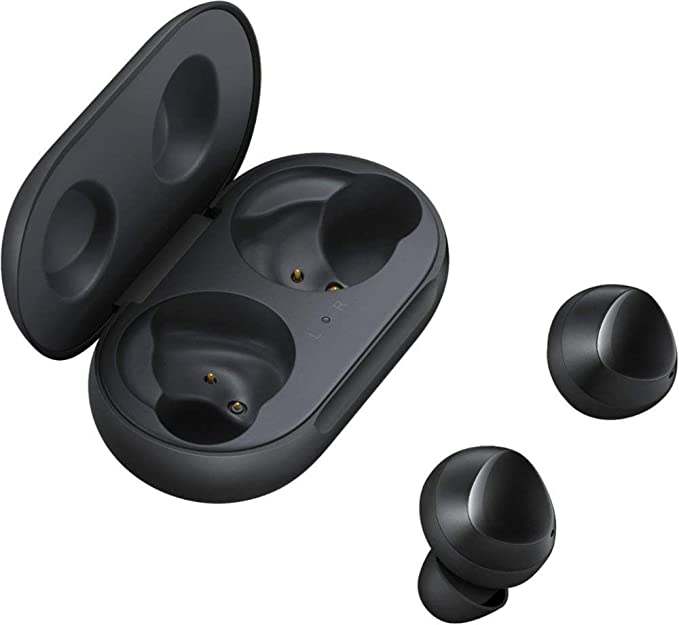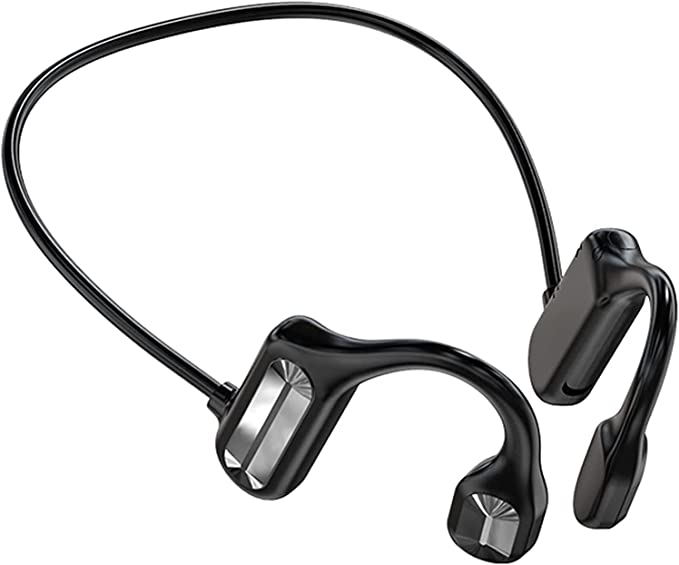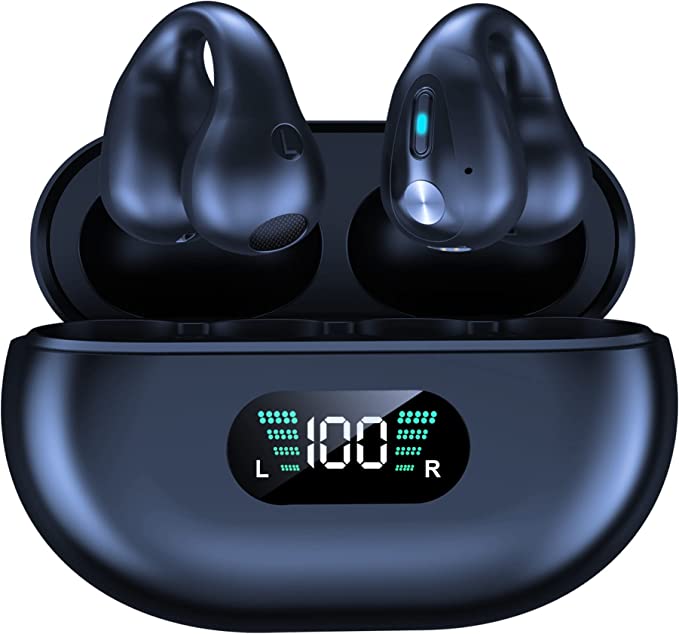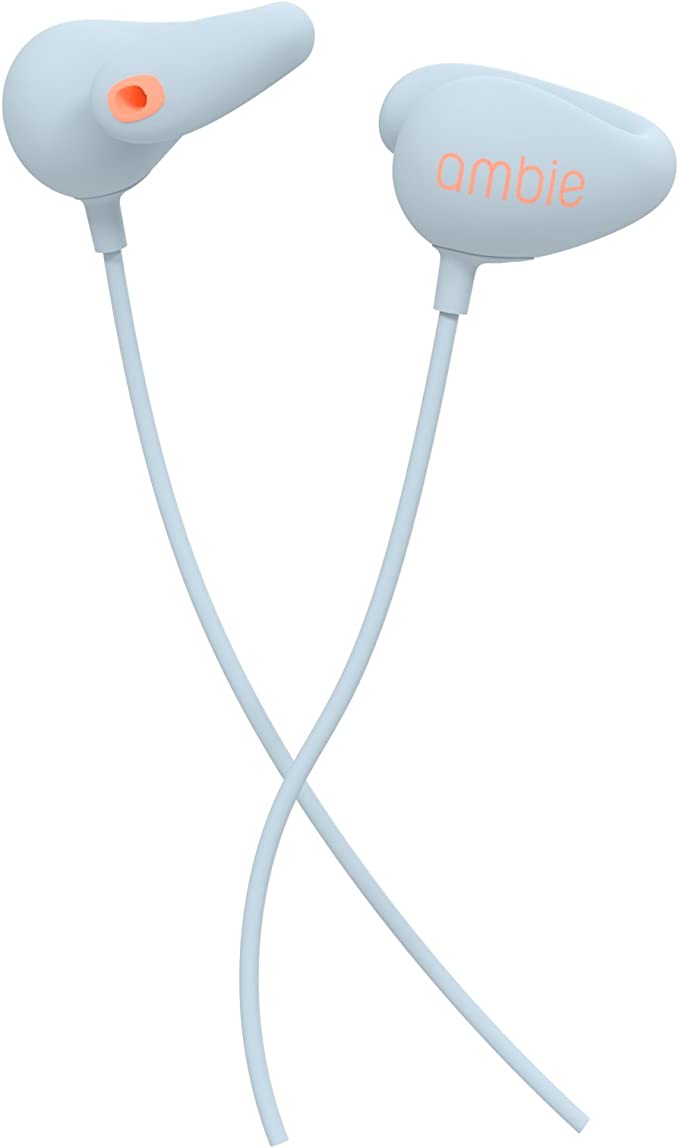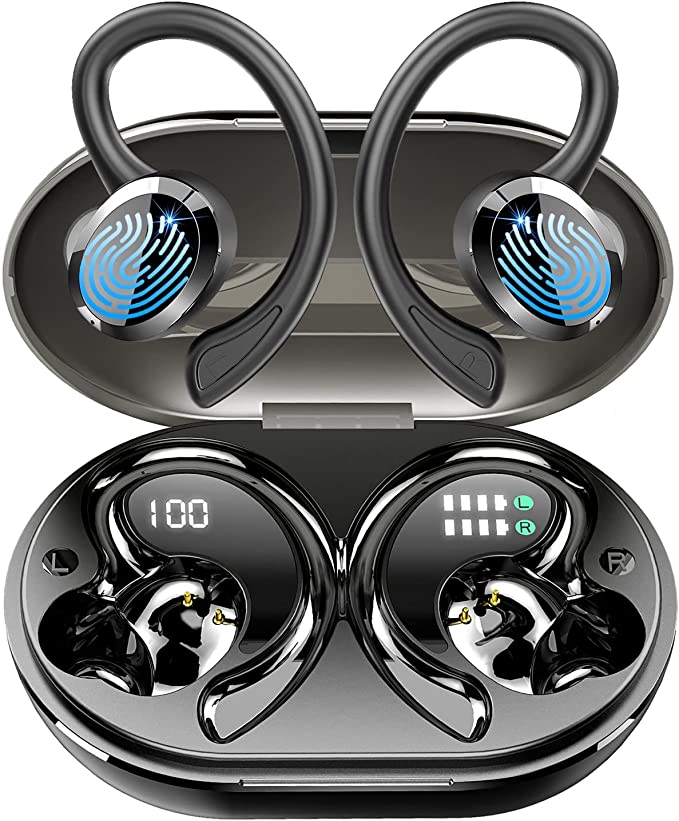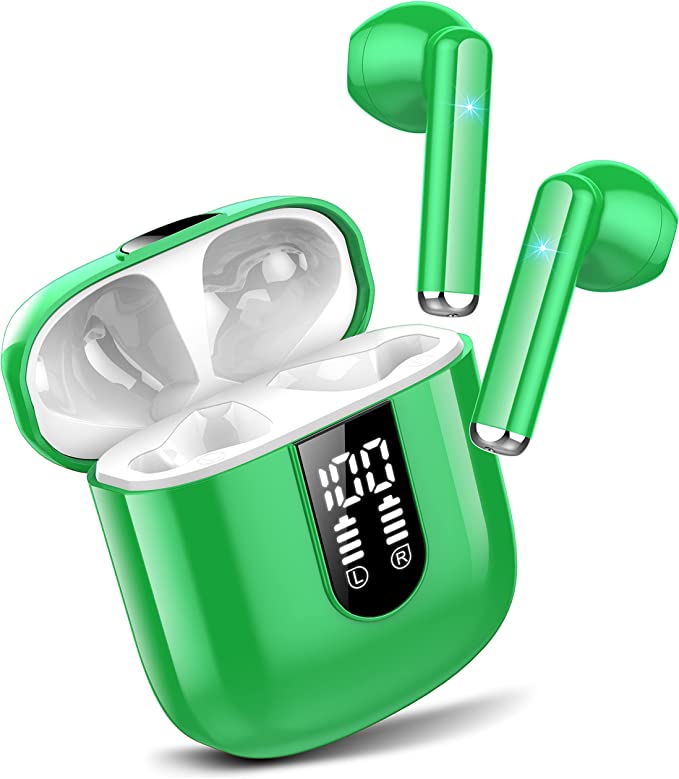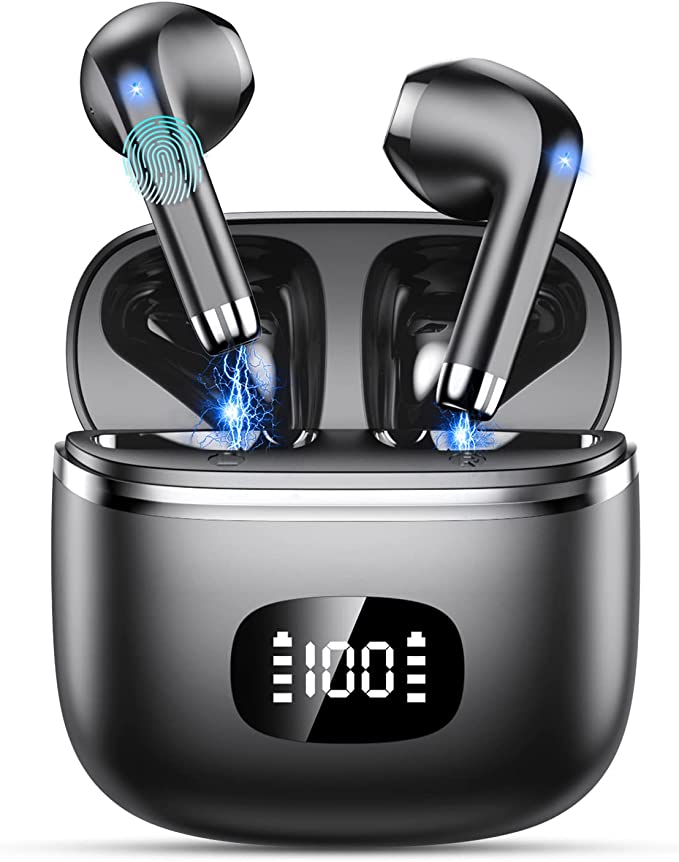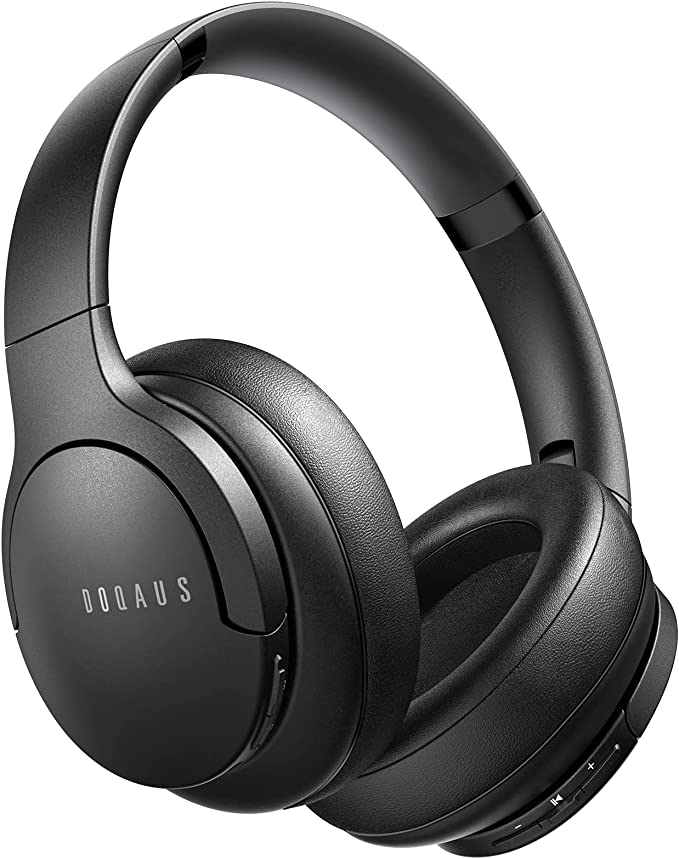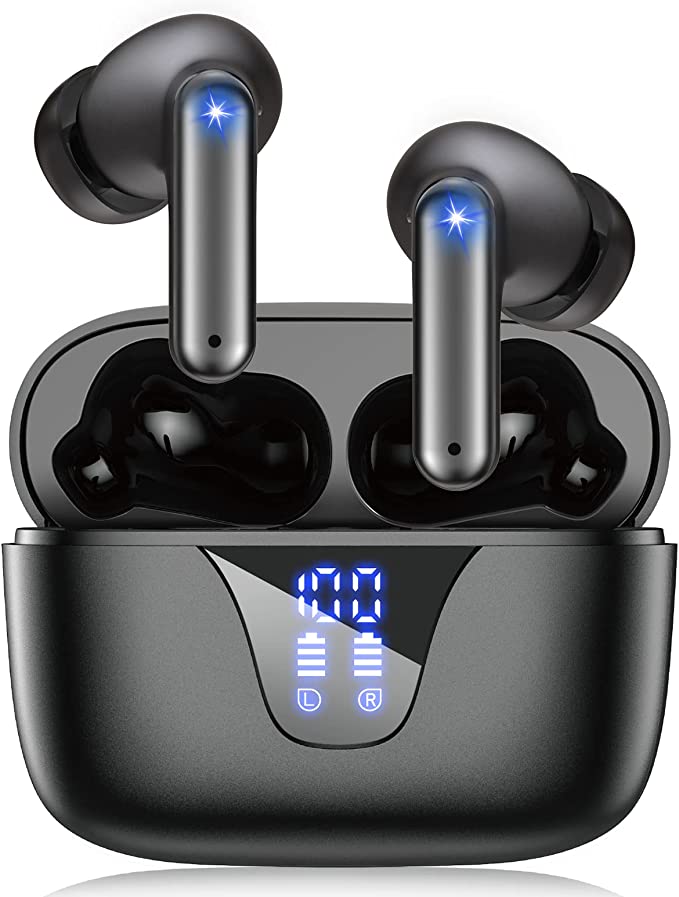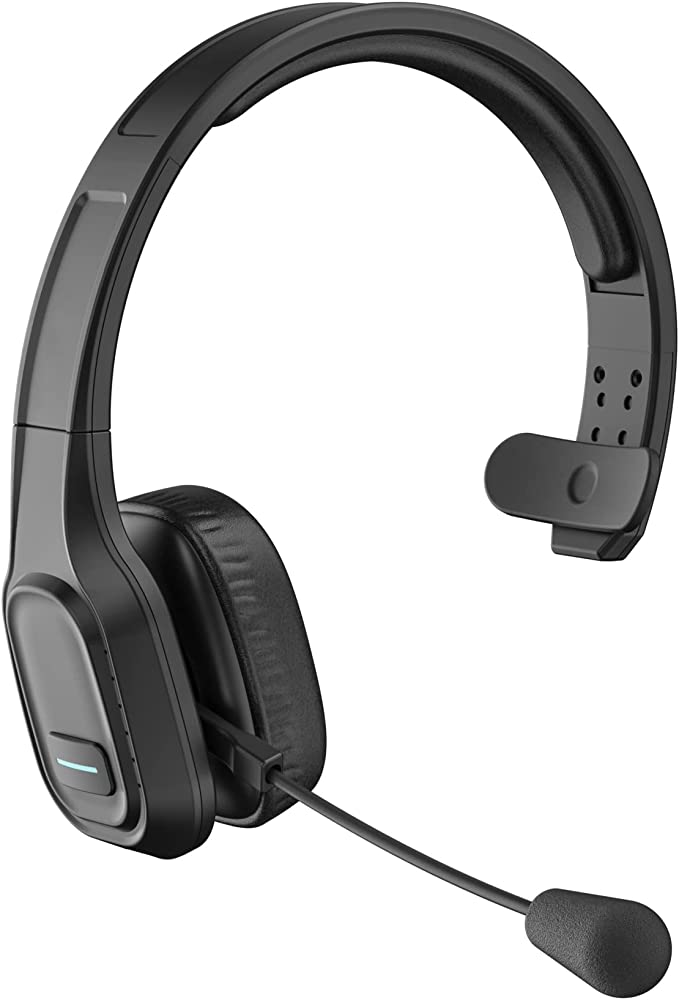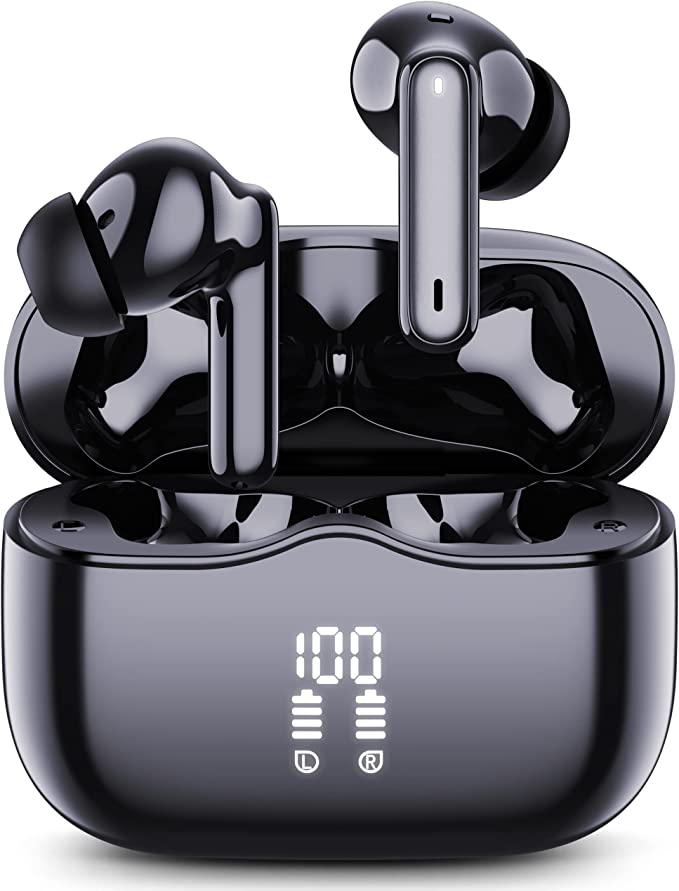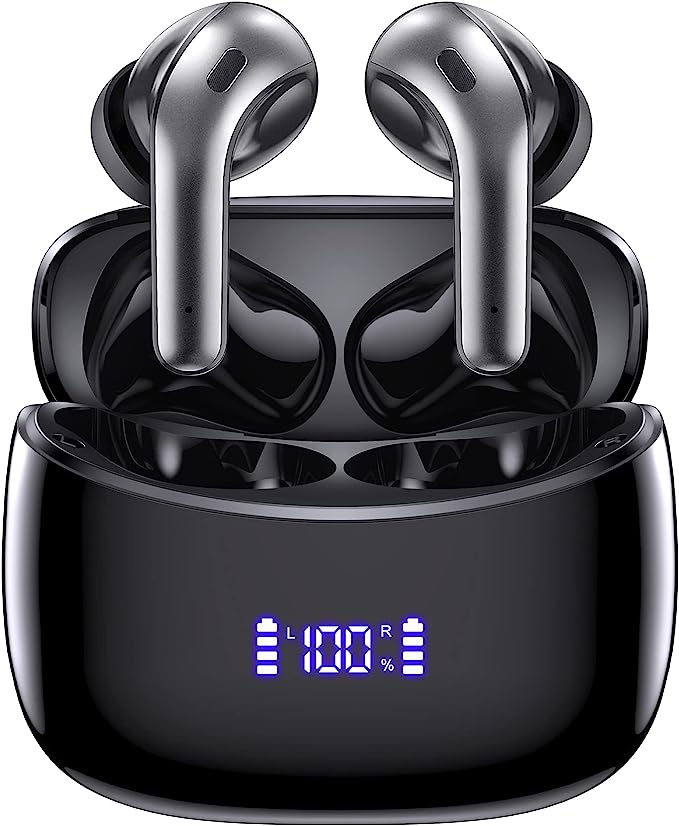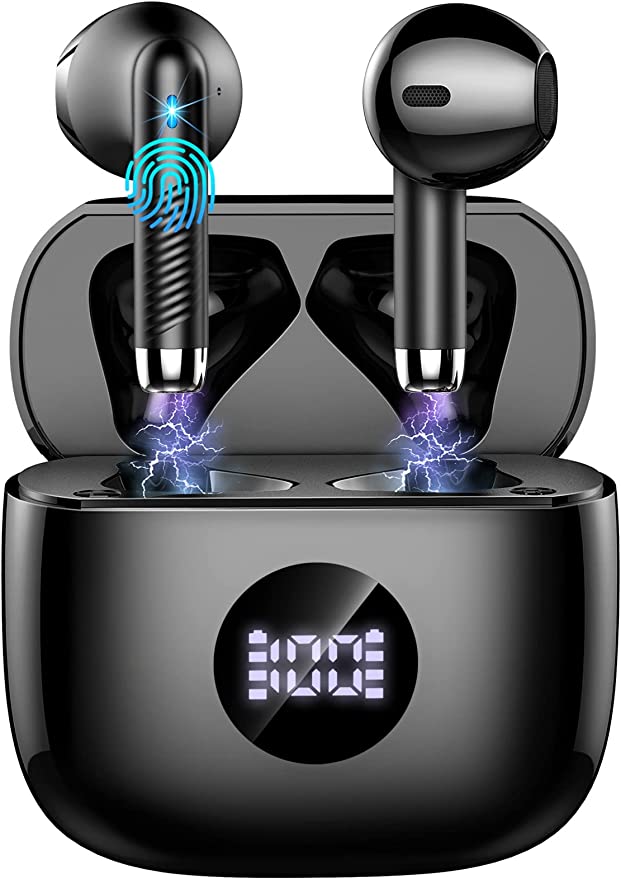SHIJIAET Q71 Open Ear Headphones: The Science of Sound Without Sealing Your Ears
Update on May 19, 2025, 6:14 p.m.
In our modern lives, we often find ourselves walking an auditory tightrope – craving the rich immersion of our personal soundtracks, podcasts, or calls, yet needing to remain tethered to the symphony of the world around us. For too long, the choice felt binary: seal ourselves off with traditional headphones, or sacrifice audio quality for environmental awareness. But a growing category of audio technology, known as open-ear headphones, is promising to resolve this dilemma. Today, we’ll take a human factors and psychoacoustics perspective on one such device, the SHIJIAET Q71 Open Ear Bone Conduction Wireless Headphones, to understand not just what it does, but how its design aims to enhance our interaction with both our digital audio and our physical surroundings.
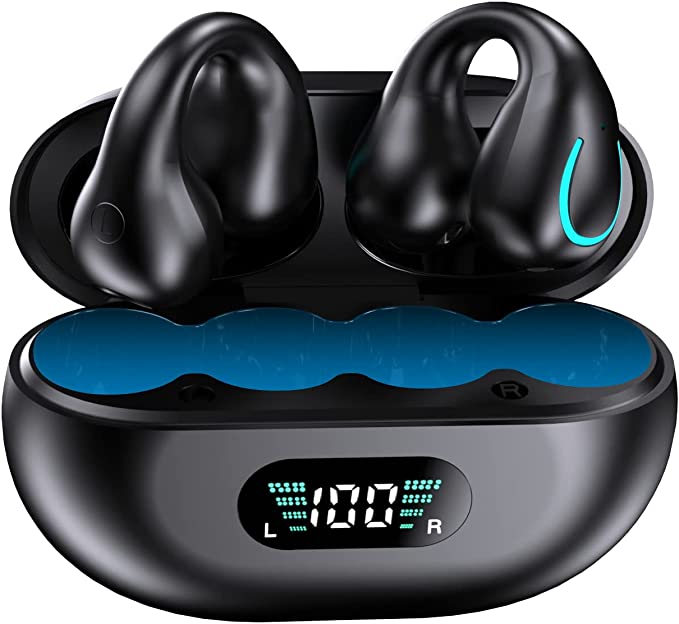
The Unsealed Symphony: Understanding the SHIJIAET Q71’s Open-Ear Approach
The most defining characteristic of the SHIJIAET Q71 is its promise of “Listening to music without blocking your ears.” Unlike traditional earbuds that plug the ear canal or over-ear headphones that create a seal, the Q71 employs what is described as a “clip-on” design, where the “earphone is no need to plug into the ear canal.” This seemingly simple distinction is profound from an auditory science and safety standpoint.
Our auditory system is a marvel of engineering, constantly gathering information about our environment. The shape of our outer ears (the pinnae) plays a crucial role in helping us localize sounds – determining their direction and distance. When we block the ear canal, we alter these natural acoustic cues. More critically, we can become oblivious to vital sounds: an approaching vehicle, a bicycle bell on a shared path, a colleague trying to get our attention in the office, or an important announcement in a public space. This isn’t just an inconvenience; it can significantly increase cognitive load as we try to compensate for lost auditory input and can pose a genuine safety risk.
The SHIJIAET Q71 headphones aim to mitigate this by leaving the ear canal open. While the product title includes the term “Bone Conduction,” the provided descriptions and user analogies (like wearing them “like clip-on earrings”) strongly suggest an open-ear air conduction mechanism where sound is directed towards the ear without sealing it. True bone conduction transmits sound primarily through vibrations on the bones of the skull. Regardless of the precise transduction method being emphasized in the Q71’s marketing, the functional outcome is clear: enabling situational awareness. Imagine jogging through a park; with an open-ear design, you could still enjoy your playlist while remaining alert to a fellow jogger politely saying, “on your left!” This ability to simultaneously process personal audio and ambient sounds is the cornerstone of the open-ear value proposition.
Engineered for a Whisper: The Ergonomics of the Q71’s Lightweight Design
One of the first things that strikes you about the Q71, according to its specifications, is its weight: “Our sport earphones weigh 0.2 OZ.” That’s approximately 5.6 grams per earphone. From a human factors perspective, this featherlight quality is paramount for comfort, especially during extended wear or dynamic activities. The less mass an object has, the less inertial force it exerts during movement, and the less pressure it places on the delicate tissues of the ear. The product also mentions a “Very mini design style,” which contributes to a feeling of unobtrusiveness.
This focus on minimizing physical burden is complemented by the choice of “premium soft silicone material.” Silicone is widely used in medical and wearable applications for good reasons: it’s generally biocompatible (unlikely to cause skin irritation), flexible, durable, and offers a comfortable, slightly grippy tactile sensation, which can aid in stability. For headphones intended for “long-term wearing without discomfort to the ears,” these material and weight considerations are not trivial; they are fundamental to a positive user experience. Picture yourself settling in for a long podcast or an extended work session – the goal is to become so accustomed to the headphones that you almost forget they are there, allowing you to focus on the audio content or your task, not on any physical discomfort.
Staying Power: How the Q71 Aims for Stability in Motion
For anyone who’s ever had an earbud pop out mid-stride or during a particularly energetic gym session, the frustration is palpable. The SHIJIAET Q71 addresses this athlete’s annoyance through its “clip-on” mechanism, further described with “securely fits the earhooks” and an “ergonomic surround and streamlined sinking design.”
Let’s break down what this means from an ergonomic standpoint. Earhooks are designed to distribute the headphone’s (already minimal) weight over a larger area of the ear, typically leveraging the top and back of the pinna for support. This creates a more stable anchor point than relying solely on pressure within the ear canal. The “ergonomic surround” suggests a shape contoured to the natural curves of the ear, maximizing contact points for a snug fit without undue pressure. When these elements work in concert, they create a system that resists the dislodging forces generated by activities like running, cycling, or other workouts. Indeed, one user in the provided data remarked that they “Fit snuggly over the ears,” and could be worn “jogging or powerwalking with absolutely no issues.” This stability is crucial, as it allows the user to focus on their activity rather than constantly fidgeting with their audio equipment.
The Invisible Connection: Decoding Bluetooth 5.3 in the Q71
The magic of wireless audio lies in technologies like Bluetooth, and the SHIJIAET Q71 incorporates Bluetooth 5.3. While the specific implementation details within any given device can vary, Bluetooth 5.3, as a standard, generally offers several potential advantages over its predecessors. These often include enhancements in connection stability, potentially lower energy consumption (which can contribute to better battery life for the overall system), improved handling of interference, and faster data transmission capabilities, which can be relevant for audio quality and reducing latency (the perceptible delay between a sound being initiated on your device and you hearing it).
The Q71 product description claims its “Bluetooth connection is stable, no Delay,” and a Q&A response indicates a range of “about 8-10 meters.” For the user, this translates to the freedom to move around without being tethered to their phone or audio device, experiencing a seamless and uninterrupted audio stream. Imagine leaving your phone on a bench at the gym while you move between equipment, or in your living room while you move about the house – a stable Bluetooth 5.3 connection aims to make this a smooth experience.
Braving the Elements (and Sweat): The Practicality of IPX4 Water Resistance
Active users, or even those who commute in unpredictable weather, understand the value of electronics that can withstand a bit of moisture. The SHIJIAET Q71 headphones are rated IPX4 Waterproof. To understand what this means, we need to briefly look at the Ingress Protection (IP) rating system. It’s a standardized way to classify the degree of protection provided by enclosures of electrical equipment against intrusion from solid objects (like dust) and liquids.
The ‘X’ in IPX4 means the device hasn’t been rated for protection against solid particle ingress (or the manufacturer chose not to test for it). The ‘4’ specifically relates to liquid ingress protection. An IPX4 rating signifies that the enclosure is protected against splashing water from any direction. Think of it like a light rain jacket for your electronics – it can handle sweat during a vigorous workout, or getting caught in a light drizzle, but it’s not designed for submersion. The seller in the Q&A section rightly confirms the Q71 “cannot be worn to swim with them.” This level of “life-level waterproof performance,” as the description puts it, offers practical peace of mind for most everyday sport and outdoor scenarios, allowing users to focus on their performance without undue worry about moisture damage.
Beyond the Basics: Sound, Charging, and User Experience Nuances
The SHIJIAET Q71 listing also mentions an “8D surround sound” feature. It’s important to approach such terms with a discerning ear. “8D sound” is not a standardized audio format or a universally defined technology in the same way that, say, Dolby Atmos is. It’s more often a marketing term used to describe a psychoacoustic effect that creates a sense of spaciousness or movement in the audio. Open-ear designs, by their very nature, can contribute to a different sound perception compared to sealed in-ear headphones. Because they don’t block the ear canal, sound waves can interact more naturally with the listener’s outer ear (pinna), which, as we discussed, aids in sound localization and can create a more “out-of-head” or spacious listening experience. This might be what the “8D” claim is alluding to, rather than a specific audio decoding technology.
For power, the Q71 comes with a “Digital Display Charging” case. This is a user-friendly feature, as a digital display can provide a more precise indication of the remaining battery in the case, helping users plan when to recharge it. The manufacturer’s description includes practical advice: “Please Charge the charging case at least one time every week,” and notes that if the case’s power is over-depleted, the LED display might take about 15 minutes to show activity once connected to a charger. They also provide a useful troubleshooting tip: “After using a period of time, the earbud don’t charge or even can’t turn on because of oxidized magnet connector, you can handle this problem by using alcohol rag to clean the magnet connector on earbud and charging case.”
Regarding battery life of the earbuds themselves, the product description doesn’t explicitly state a playtime per charge. However, one detailed user review (Rebecca A., from the provided data) mentions an expectation of 6 hours of music playback which her unit did not meet, with actual times being significantly shorter and varying between earbuds. This user also noted that the charging case seemed to lose its charge quickly when disconnected from a power source. It’s important to remember that individual user experiences with battery life can vary significantly based on usage patterns (volume levels, type of audio content, connection stability) and even unit-to-unit manufacturing tolerances. This feedback underscores the general reality for all wireless devices: battery performance is a critical factor, and published specifications are often “up to” figures achieved under ideal conditions.
Finally, ease of use is also touched upon. The same user review mentioned that “The controls were easy to use and were not overly sensitive or easy to accidentally hit.” The product description also includes detailed instructions on “How to reset the earbud,” which is a practical inclusion for troubleshooting connectivity issues.
Conclusion: Finding Your Auditory Balance with Open-Ear Technology
The SHIJIAET Q71 Open Ear Wireless Headphones, based on the provided information, represent an accessible entry into the world of open-ear audio. Their design philosophy clearly prioritizes situational awareness, long-term comfort, and a stable fit for active users. By leaving the ear canal unobstructed, they offer a way to integrate personal audio with the ambient environment, a crucial consideration for safety and for those who prefer not to feel entirely cut off from their surroundings. Features like the lightweight construction, silicone materials, ergonomic earhooks, Bluetooth 5.3, and IPX4 rating all contribute to a device tailored for motion and everyday resilience.
As with any technology, understanding the underlying principles and potential nuances—from how an open-ear design impacts sound perception to the practicalities of battery life and water resistance—empowers users to make informed choices. The SHIJIAET Q71, and open-ear headphones in general, invite us to reconsider our relationship with personal audio, suggesting a future where we can be seamlessly connected to both our digital world and the rich, dynamic soundscape of the physical world around us, finding a more harmonious auditory balance.

